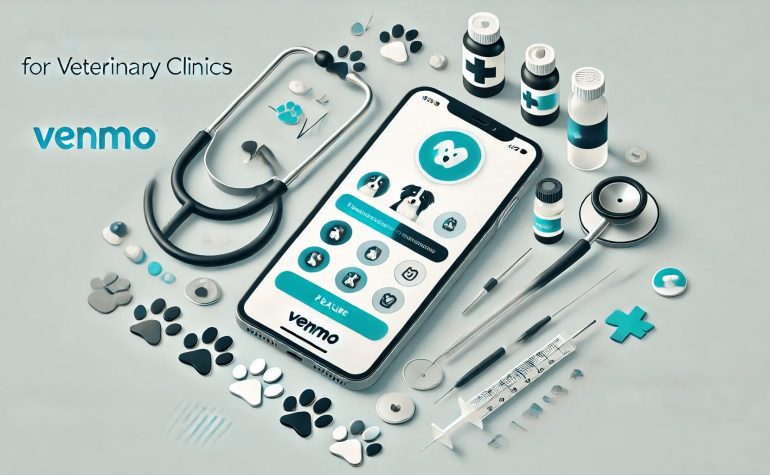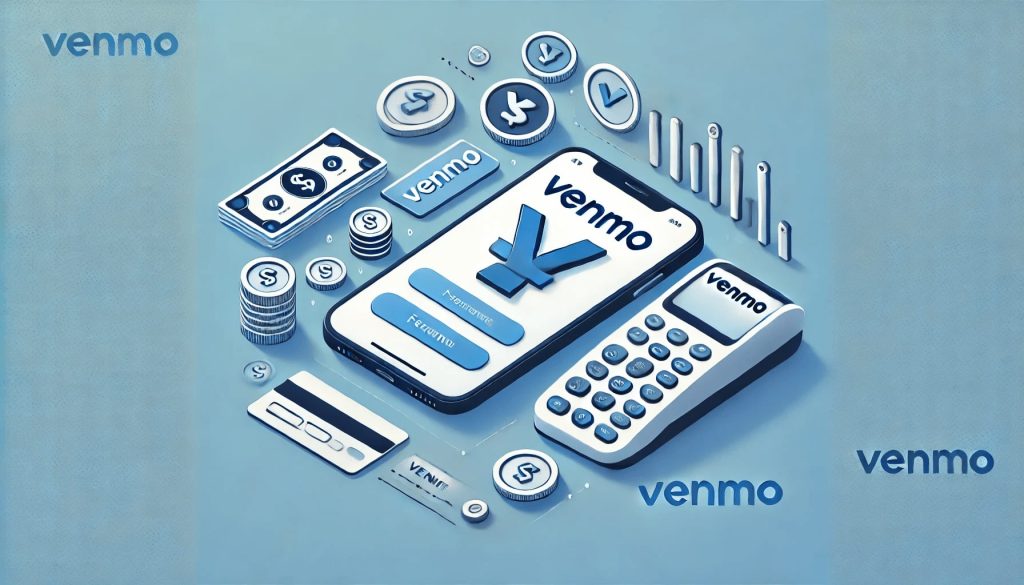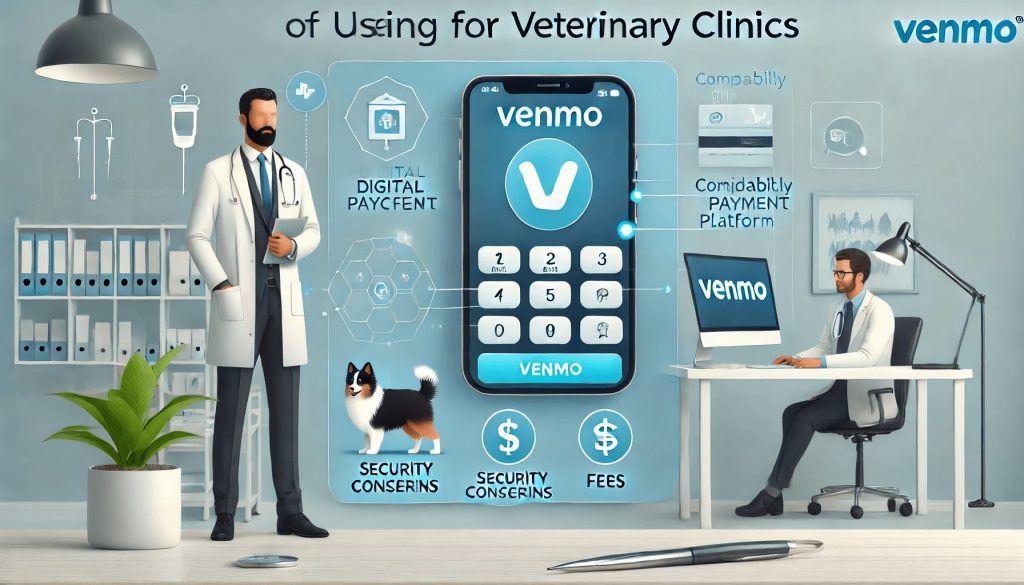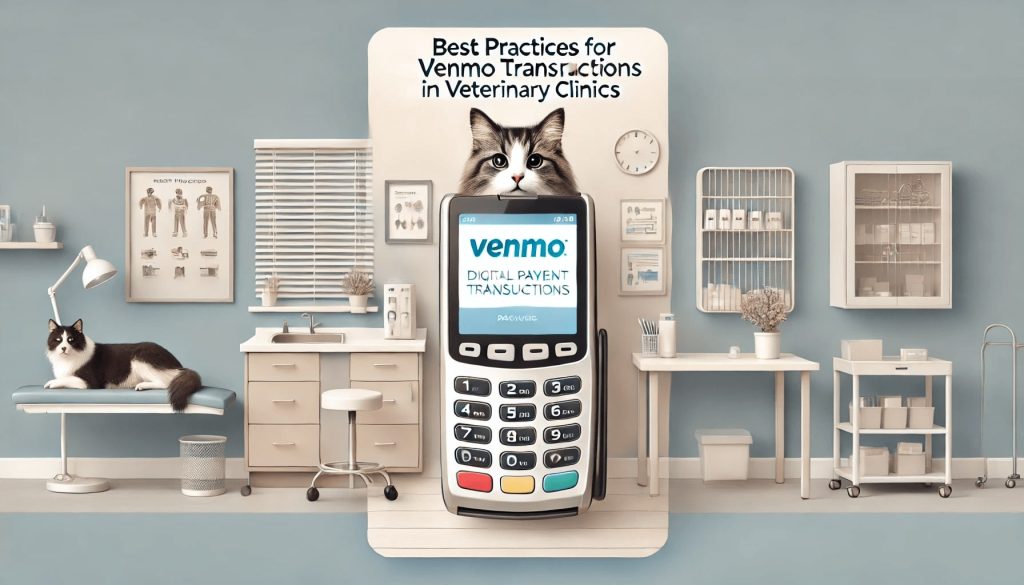
By alphacardprocess October 5, 2024
In today’s digital age, technology has revolutionized the way businesses operate, including veterinary clinics. One such technological advancement that has gained significant popularity is Venmo, a mobile payment platform that allows users to send and receive money with ease. With its user-friendly interface and widespread adoption, many veterinary clinics are considering whether they can leverage Venmo to streamline their payment processes and enhance customer convenience.
In this article, we will explore the potential benefits and drawbacks of using Venmo for veterinary clinics, provide a step-by-step guide on setting up Venmo, discuss best practices for ensuring security and privacy, and explore how Venmo can be integrated with existing payment systems.
Understanding Venmo: A Brief Overview of the Payment Platform
Venmo, owned by PayPal, is a peer-to-peer payment platform that allows users to send and receive money electronically through their mobile devices. Launched in 2009, Venmo quickly gained popularity among millennials and has since become a widely accepted method of payment for various goods and services. The platform allows users to link their bank accounts, credit cards, or debit cards to their Venmo account, making it easy to transfer funds to friends, family, or businesses.
One of the key features that sets Venmo apart is its social aspect. Users can add friends, view and like their transactions, and even leave comments on them. This social element has made Venmo a popular choice for splitting bills, paying rent, or reimbursing friends for shared expenses. However, it is important to note that Venmo’s social feed can be adjusted to private settings, ensuring that transactions remain confidential.
Benefits of Using Venmo for Veterinary Clinics

- Convenience for Customers: By accepting Venmo as a payment method, veterinary clinics can offer their customers a convenient and hassle-free way to pay for services. Many pet owners already use Venmo for various transactions, so accepting Venmo can eliminate the need for them to carry cash or write checks.
- Faster Payments: Venmo transactions are typically processed quickly, allowing veterinary clinics to receive payments promptly. This can improve cash flow and reduce the time spent on administrative tasks such as processing checks or waiting for payments to clear.
- Enhanced Customer Experience: Integrating Venmo into the payment process can enhance the overall customer experience. With just a few taps on their mobile devices, pet owners can easily make payments, eliminating the need for manual entry of credit card information or signing paper receipts.
- Increased Transparency: Venmo transactions provide a clear record of payments, making it easier for veterinary clinics to track and reconcile their finances. This can simplify accounting processes and reduce the chances of errors or discrepancies.
- Competitive Advantage: Accepting Venmo as a payment method can give veterinary clinics a competitive edge. As more businesses embrace digital payment platforms, offering Venmo as an option can attract tech-savvy customers who value convenience and efficiency.
Potential Drawbacks and Considerations of Venmo for Veterinary Clinics

- Transaction Fees: While Venmo is free to use for personal transactions, there are fees associated with using it for business purposes. Veterinary clinics should carefully consider these fees and evaluate whether the convenience and benefits outweigh the costs.
- Limited Customer Base: Although Venmo has gained popularity, it is important to note that not all pet owners may be familiar with or have access to the platform. Veterinary clinics should assess their target market and determine if accepting Venmo aligns with their customers’ preferences.
- Security Concerns: While Venmo has implemented security measures to protect user information, there is always a risk of unauthorized access or fraudulent activity. Veterinary clinics must educate themselves and their staff on best practices for securing transactions and protecting customer data.
- Lack of Integration with Practice Management Systems: Integrating Venmo with existing practice management systems may require additional software or customization. Veterinary clinics should assess the compatibility of their systems and consider the time and resources required for integration.
- Limited Customer Support: Venmo’s customer support is primarily focused on personal users, and business support may be limited. Veterinary clinics should be prepared to handle any customer inquiries or issues related to Venmo payments independently.
How to Set Up Venmo for Your Veterinary Clinic: Step-by-Step Guide
Setting up Venmo for your veterinary clinic is a straightforward process. Follow these steps to get started:
- Download the Venmo App: Visit the App Store or Google Play Store on your mobile device and search for the Venmo app. Download and install the app.
- Create a Venmo Account: Open the Venmo app and sign up for an account. You will need to provide your email address, create a password, and verify your phone number.
- Link a Bank Account or Card: To receive payments, you need to link a bank account or card to your Venmo account. Follow the prompts in the app to add your preferred payment method.
- Customize Your Profile: Personalize your Venmo profile by adding a profile picture and a username. You can also adjust your privacy settings to control who can see your transactions.
- Enable Business Features: To use Venmo for business purposes, you need to enable business features. Go to the “Settings” section of the app, select “Business Profile,” and follow the instructions to set up your business profile.
- Promote Your Venmo Account: Once your Venmo account is set up, promote it to your customers. Display your Venmo username or QR code at your clinic, on your website, or in promotional materials to encourage customers to pay using Venmo.
Ensuring Security and Privacy: Best Practices for Venmo Transactions in Veterinary Clinics

While Venmo has implemented security measures, veterinary clinics should take additional steps to ensure the security and privacy of Venmo transactions. Here are some best practices to consider:
- Educate Staff and Customers: Train your staff on the proper use of Venmo and educate them about potential security risks. Similarly, educate your customers on how to use Venmo securely and advise them to enable security features such as two-factor authentication.
- Use Strong Passwords: Ensure that your Venmo account has a strong, unique password. Avoid using easily guessable passwords and consider using a password manager to securely store and manage your passwords.
- Enable Security Features: Venmo offers security features such as two-factor authentication and PIN protection. Enable these features to add an extra layer of security to your account.
- Regularly Monitor Transactions: Keep a close eye on your Venmo transactions and monitor for any suspicious activity. Report any unauthorized transactions or potential security breaches to Venmo immediately.
- Keep Software Updated: Ensure that the Venmo app and any associated software on your devices are regularly updated to benefit from the latest security patches and enhancements.
- Secure Network Connections: When using Venmo, ensure that you are connected to a secure and trusted network. Avoid using public Wi-Fi networks, as they may be vulnerable to hacking or eavesdropping.
Integrating Venmo with Your Veterinary Clinic’s Existing Payment Systems
Integrating Venmo with your veterinary clinic’s existing payment systems can streamline your financial processes and enhance customer convenience. Here are some steps to consider when integrating Venmo:
- Assess Compatibility: Determine if your existing payment systems, such as point-of-sale (POS) systems or practice management software, are compatible with Venmo. Consult with your software providers or IT team to understand the integration options available.
- Explore Third-Party Solutions: If your existing systems do not support Venmo integration, consider exploring third-party solutions that can bridge the gap. There are various payment gateway providers that offer Venmo integration services.
- Train Staff: Once the integration is complete, train your staff on how to process Venmo payments using your existing systems. Ensure they are familiar with the necessary steps and any additional documentation or reporting requirements.
- Update Payment Policies: Update your clinic’s payment policies to include Venmo as an accepted payment method. Clearly communicate this to your customers through signage, your website, and other communication channels.
- Test and Monitor: Before fully implementing Venmo integration, conduct thorough testing to ensure that transactions are processed accurately and seamlessly. Monitor the integration closely during the initial stages to address any issues promptly.
Frequently Asked Questions (FAQs)
Q.1: Can I use Venmo for my veterinary clinic if I don’t have a business account?
Yes, you can use Venmo for your veterinary clinic even without a business account. However, it is recommended to enable business features to access additional functionalities and to clearly differentiate personal and business transactions.
Q.2: Are there any transaction limits on Venmo for business accounts?
Yes, Venmo imposes transaction limits on business accounts. As of the time of writing, the limit is $6,999.99 per transaction and $20,000 per week. However, these limits may vary, so it is advisable to check Venmo’s website or contact their customer support for the most up-to-date information.
Q.3: Can I issue refunds through Venmo for veterinary services?
Yes, Venmo allows businesses to issue refunds for transactions made through the platform. You can initiate a refund by locating the transaction in your Venmo account and selecting the refund option.
Q.4: Can I use Venmo to pay my veterinary suppliers or vendors?
Venmo is primarily designed for peer-to-peer transactions and may not be suitable for paying suppliers or vendors. It is recommended to use other payment methods such as bank transfers or business payment platforms for such transactions.
Q.5: What should I do if a customer disputes a Venmo transaction?
If a customer disputes a Venmo transaction, it is important to gather all relevant information and evidence related to the transaction. Communicate with the customer to understand their concerns and attempt to resolve the issue amicably. If necessary, involve Venmo’s customer support to mediate the dispute.
Conclusion
Venmo offers veterinary clinics the potential to streamline payment processes, enhance customer convenience, and improve overall financial management. By understanding the benefits and drawbacks of using Venmo, veterinary clinics can make informed decisions about integrating this payment platform into their operations. By following best practices for security and privacy, veterinary clinics can ensure that Venmo transactions are conducted securely.
With careful planning and consideration, Venmo can be seamlessly integrated with existing payment systems, providing a convenient and efficient payment option for pet owners. As technology continues to evolve, veterinary clinics must adapt to meet the changing needs and preferences of their customers, and Venmo presents an opportunity to do just that.